Scottish Sea Fisheries Employment Report
This report details the findings of a new survey of crews on Scottish fishing vessels. It provides new information across a range of indicators such as age, nationality, job tenure and skills.
Quantitative Analysis
3. Age Profile of Scottish Fishing Crews
The Scottish fishing industry employs a proportionate number of younger workers compared to the Scottish and UK labour force. Overall, the average age of the fishermen surveyed was 39.4 years and the highest proportion are found in the 35-49 age cohort. As illustrated in figure 1 there are fewer older (50-64) workers within the industry, which is also typical of the trends found in the total Scottish and UK workforce, as is the case for the 16-19 year olds.
Figure 1: Comparison of the national average of UK, Scottish and fishing labour. Data on the Scottish and UK Labour force was sourced from the Annual Population Survey ( ONS) 2014.
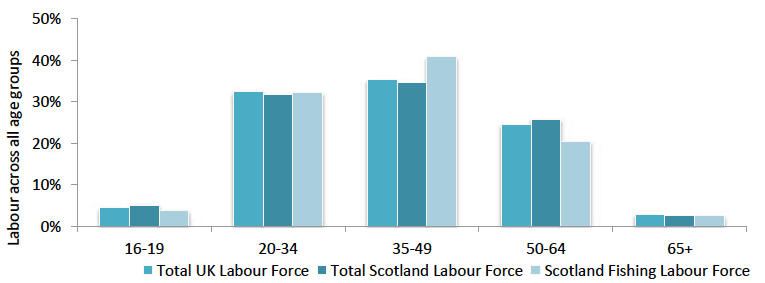
When Scotland crew data is re-classified into smaller age groups [2] (Fig. 2) the spread between age cohorts indicates that the majority of the crews are in in the 31-40 and 41-50 year old cohorts with a slightly lower proportion in the 21-30 year old cohort. Whilst this suggests that the average age may be increasing, overall the industry has a relatively young work force given that 41 is mid-way through the average working life (16 - 65) and the majority of workers are in the first three bars in figure 2.
Figure 2: Age profile of Scotland's fishermen. ( n = 844)
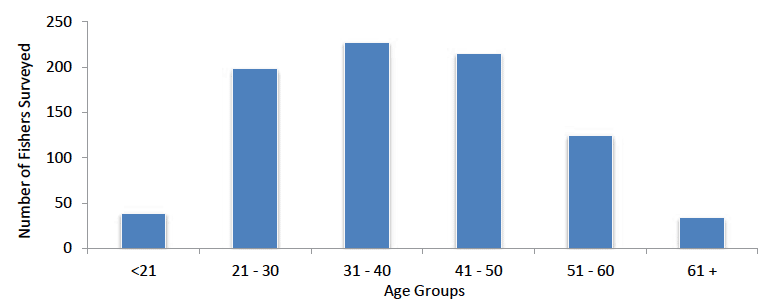
Figure 3: Age profile of Scotland fishermen by British, EU member and non- EU member nationalities ( n = 838)
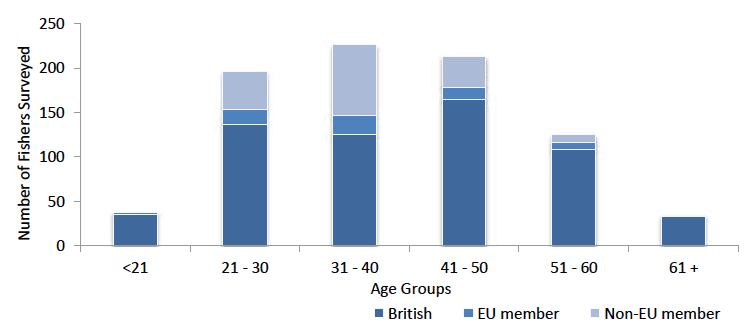
This is most likely a reflection of the demands of the job, which requires physically fit workers. The composition of crew in the younger age categories is shifting to EU and non- EU workers, although British workers still make up the majority in all cohorts. It would also appear that young British workers are coming into the industry as demonstrated in the <21 and 21-30 year old ages cohorts.
The Pots and Traps and Scallop Dredge segments had the least variation between age cohorts, with Pots and Traps being the only sector that had a higher proportion of young and old in comparison with middle-aged workers (Fig. 4). Nephrops trawls and Demersal (>24m, seiner, pair trawls) were dominated by 21 to 50 year olds and Demersal (<24m) had the youngest crew with very few over 40 years old.
Figure 4: Age profile of workers by key sectors ( n = 810)
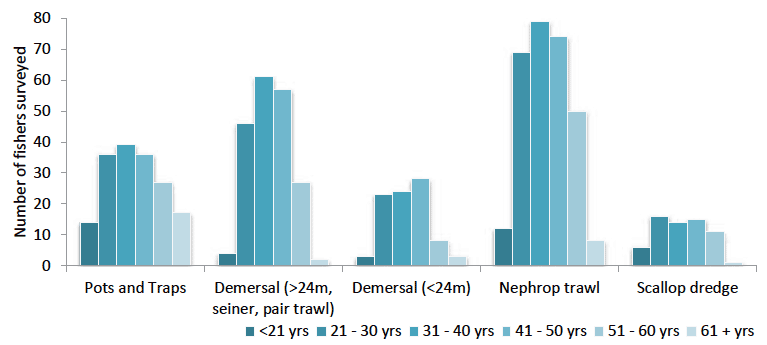
Figure 5: Mean ages of crew member by position in key sectors ( n = 810)
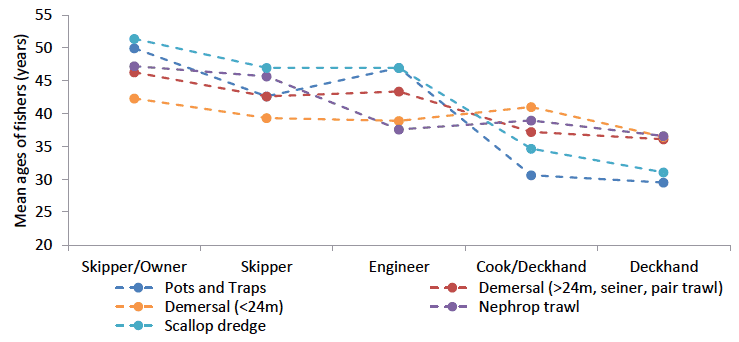
There is a clear increase in mean age of fishers as positions of authority and skills increase with skippers on average 8.8 years older than deckhands. Pots and Traps have the youngest mean age of deckhands at around 30 years of ages followed by Scallop Dredgers between 30-35 years old. Demersal <24m vessels have the lowest age of crew in skipper/owner, skipper and engineers, all at around 40 years of ages (Fig. 5). Demersal <24m vessels have the least variation in age between position on vessels whilst Pots and Traps and Scallop Dredge have the biggest age difference between skipper, engineers and deckhands.
Contact
There is a problem
Thanks for your feedback